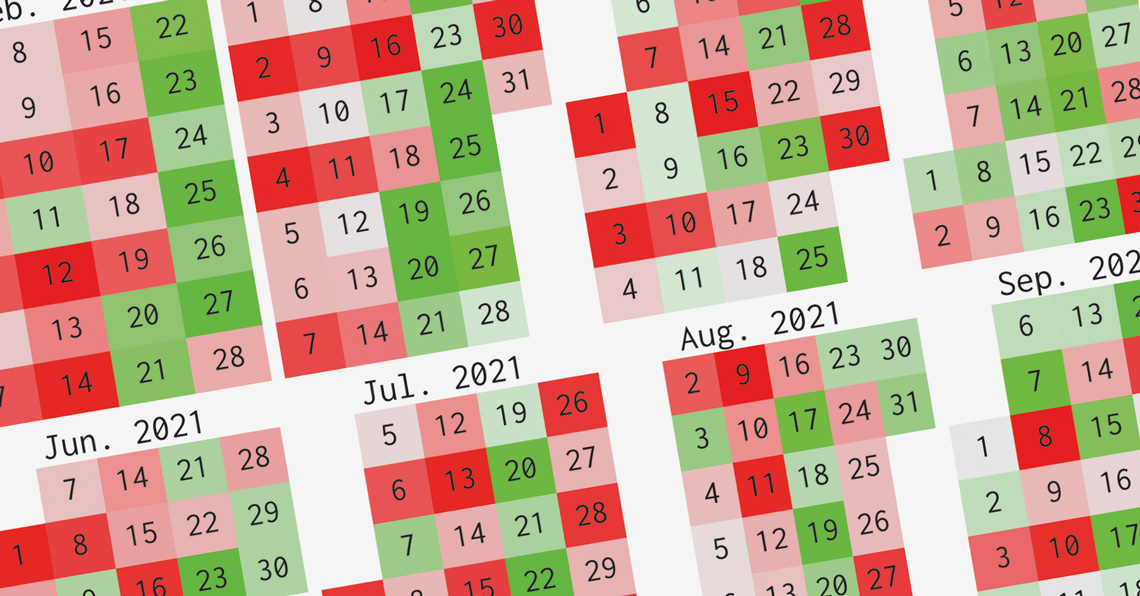almanac.computer
Issue: XXVIII.1 January - February 2021Page: 14
Digital Citation
Authors:
David Benqué
Almanac publications are practical guides for navigating the future, comprising calendars, maps, forecasts, tables, unit conversions, folklore, and other useful information. Almanacs have been in print circulation since at least the 17th century, with almanac-like artifacts such as maps, tablets, and ledgers dating back millennia in many cultures around the world. They are still published to this day in areas such as farming, nautical navigation, and finance.
almanac.computer revisits the almanac to unpack the cosmic imaginary surrounding data and algorithms.
Journalist Adrienne Lafrance argues [1] that The Old Farmer's Almanac is an early prototype for the Internet. The yearly publication served the same functions as a smartphone, such as offering weather predictions, and occupied a similar cultural space. Almanacs are products of a cultural imaginary where the cosmos directly informs events on Earth. Examples include weather-prediction models based on sun-spot activity and the origins of statistics in astronomical science, as well as moon cycles and divination practices such as astrology. Since the first issue of the The Old Farmer's Almanac in 1792, parts of this cosmic imaginary of data and prediction have been amplified and legitimized—they are now called data analytics, or even artificial intelligence. Other parts, such as astrology, have been discarded as illegitimate forms of speculation in breach of scientific rationality.
 |
almanac.computer cover |
The publication almanac.computer revisits the almanac to unpack the cosmic imaginary surrounding data and algorithms. The project makes use of contemporary tools used in data science and machine learning to implement divinatory rationalities—algorithmic forms of astrology. It uses astronomical data as the basis for predictions ranging from financial markets to energy infrastructure, gambling, and mundane daily tasks. The project aims to excavate the history of prediction from a new angle, highlighting the mediated nature of algorithmic processes that are usually presented as objective and neutral. Almanac.computer frames all predictions as modes of relating events on earth to cosmic forces, interrogating the legitimacy assigned to some forms of speculation over others.
Visit the almanac: https://almanac.computer
Benqué, D. Cosmic spreadsheets. in Supra Systems #1. G. Voss, ed. London College of Communication, London, 2018; http://suprasystems.studio/downloads/book-chapters/Supra%20Systems%20Book_Chapter%2010_Benque.pdf
Benqué, D. Case Board, Traces, and Chicanes: Diagrams for an Archaeology of Algorithmic Prediction Through Critical Design Practice. Ph.D. thesis. Royal College of Art, 2020; https://researchonline.rca.ac.uk/4420/
 |
Electional Astrology is a type of astrology that looks forward for the best days to plan particular tasks or events. In this widget, I translated the criteria for a set of tasks—for example, not to plan meetings when Mercury is retrograde [2]—into code that produces calendars for a specific task/location pair. The criteria are first computed individually before being aggregated into a score, grading each day of the year ahead for the task in question. |
 |
Cosmic Commodity Charts predict prices on commodity futures markets using the positions of the planets of the solar system. Historical price data is used as a target and planet positions from the JPL ephemeris [3] as features to train a support vector regression algorithm. Once the statistical relationship between positions and price is established in the fit of the model, future planet positions from the ephermeris are used to predict future prices. The chart displays the curve for the year ahead and highlights the high and low prices. |
 |
Power Grid Harmonics uses elements from financial technical analysis to detect patterns in the U.K. power grid's fluctuations. The theory of "harmonic trading" [4] is a form of technical analysis based on Fibonacci angles and numbers, promising profits by detecting the "natural cycles of the market." I applied these techniques to the frequency of the U.K. power grid, following an algorithmic trading YouTube tutorial to implement them in Python [5]. This suggests some kind of harmony or hum to the fluctuations of electricity. |
1. LaFrance, A. How the Old Farmer's Almanac previewed the information age. The Atlantic. Nov. 13, 2015; https://www.theatlantic.com/technology/archive/2015/11/how-the-old-farmers-almanac-previewed-the-information-age/415836/
2. Orion, R. Astrology for Dummies. 2nd edn. John Wiley & Sons, Hoboken, NJ, 2007.
3. Folkner, W.M. et al. The planetary and lunar ephemerides DE430 and DE431. IPN Progress Report 42, 196 (2014); ftp://naif.jpl.nasa.gov/pub/naif/generic_kernels/spk/planets/de430_and_de431.pdf
4. Carney, S. The Harmonic Trader. HarmonicTrader.com, Tucson, AZ, 1999:
5. Python Parseltongue. FOREX Harmonic Pattern Scanning Algorithm Tutorial Series, Youtube, 2017; https://www.youtube.com/playlist?list=PLFYcVF7huJR_4FRTZcR-rrSOpdTfoFnEI
David Benqué is a designer and researcher from Paris, living and working in London. He is a recent Ph.D. graduate from the Royal College of Art. His thesis proposes diagrams as a language to critically investigate algorithmic prediction. His research operates through design practice, while borrowing methodology from media archaeology and the digital humanities. [email protected]
https://diagram.institute https://davidbenque.com
Copyright held by author
The Digital Library is published by the Association for Computing Machinery. Copyright © 2021 ACM, Inc.



